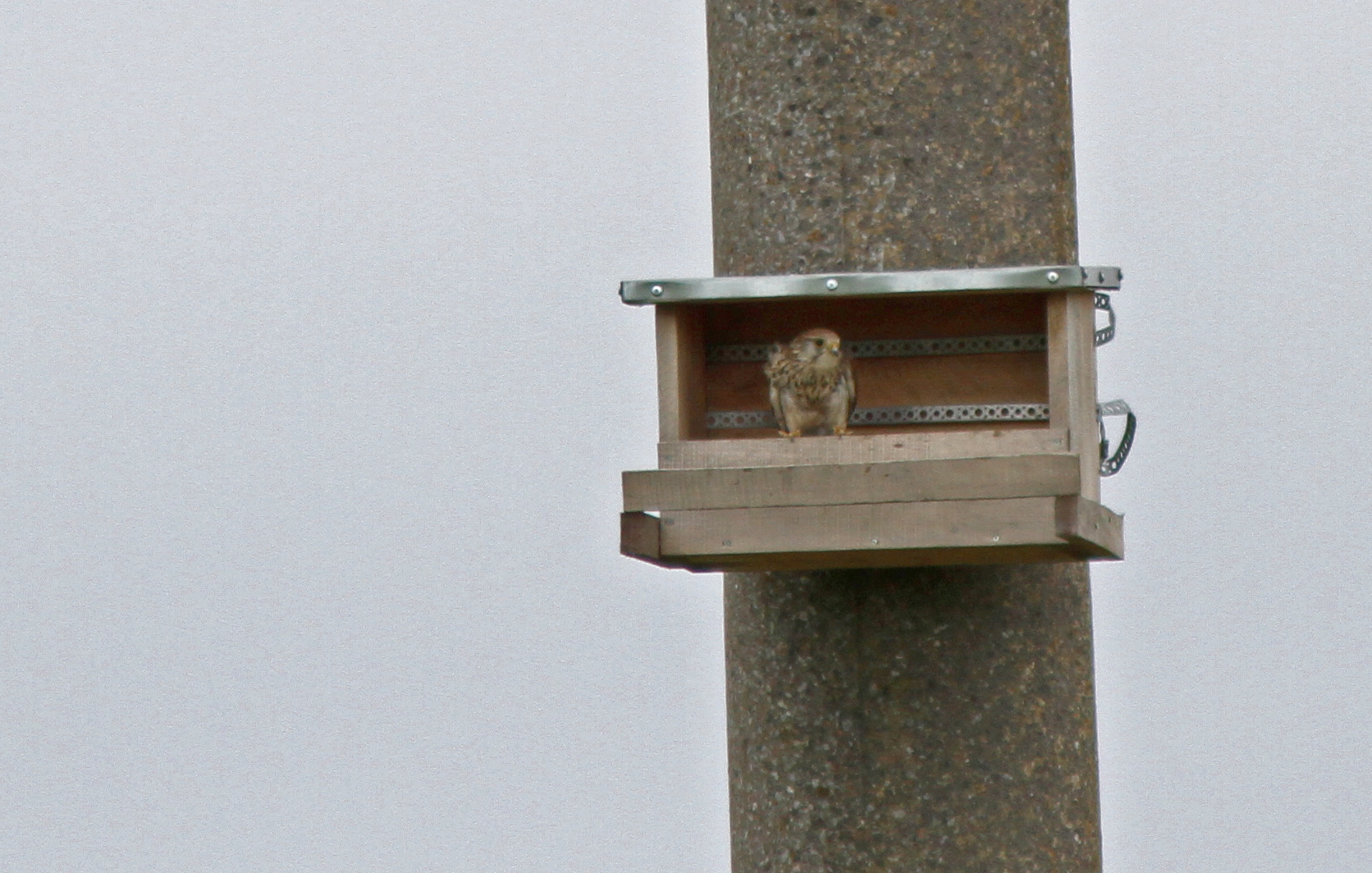500 – a lot or a little?

Population of one of the smallest breeding species of falcons in Lithuania Common Kestrel (Falco tininculus), which was assigned to the category of extinct bird species, is recovering. The positive changes are observed due to the project, which is implemented by the Lithuanian Ornithological Society in cooperation with the AB Litgrid. The population has increased by 500 individuals since the practical measures were introduced.
In the mid of the last century Common Kestrel was rather common falcon species in Lithuania. However, alike in most other EU countries, a few decades ago a rapid increase of the population was registered in the country, and very likely it was related to the increase of pesticides’ use in the agriculture. As a result in 2010-2014 only 150-300 pairs of Common Kestrel were breeding in Lithuania.
Since 2015 the nesting boxes for Common Kestrels were installed on the power pylons of the electricity transmission lines. Until 2018 in the whole country 530 nesting boxes have been settled for these birds. The ornithologists were checking, how many nests are occupied and what is the success rate of the breeding population. The highest number of occupied nests was registered in those areas, where previously natural nesting conditions were existing - Klaipėda, Kaunas, Alytus and Vilnius regions.
Inventory of nests in 2015, 2016 and 2017, showed that successfully were breeding respectively 3, 36 and 64 pairs. 11,9 % of checked nests were occupied in 2016, while in 2017 the increase until 13,5 % was registered. The figures seem to be moderate, however every nest hosted 3-6 chicks. The average number of juveniles was 5,2 individuals/nest and in 2017 4,2 individuals/nest. It was estimated, that during 3 years of the project implementation 470 chicks were raised in the nesting boxes, installed in the frame of the project. This number was also supplemented by the birds, which were breeding in other artificial nests, therefore it can be stated that in the mentioned period the population was increased by at least 500 birds. If the occupation rate will stay stable, each year population of kestrel in Lithuania will be supplemented by 250-300 juveniles. However, the ultimate numbers might be even higher, as the last years’ trends seem to be optimistic.
Thanks to the project and of the active society efforts the breeding population of the Common Kestrel in Lithuania has increased from 21% until 42%. The numbers will be multiplied in the future, as nesting boxes will be occupied by the juveniles, successfully raised in the artificial nests. The highest results are expected within 4-5 years after the nest was installed. We assume, that 25%-50% of nests will be occupied at that time, thus the population will be increased twice since the project start.
Back
Projektą „Paukščių apsaugos priemonių įdiegimas Lietuvos aukštos įtampos elektros energijos perdavimo tinkluose“ (LIFE13 BIO/LT/001303) finansuoja Europos Sąjungos aplinkos finansinis mechanizmas „LIFE+“, LR Aplinkos ministerija ir projekto partneriai. Projekto pradžia – 2014 m. birželis, planuojama pabaiga – 2018 m. liepa.





